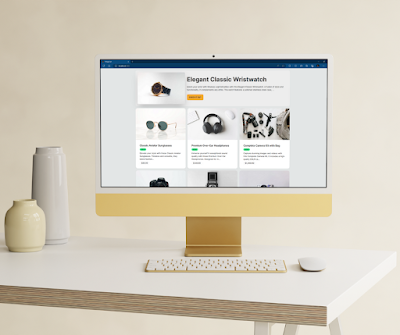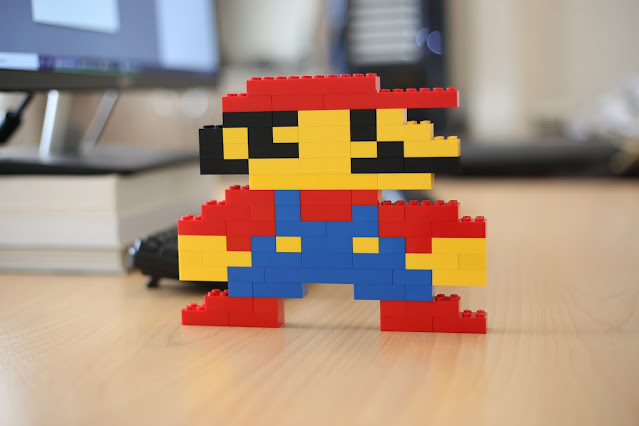How to use typography to build a strong brand identity
If you’re a young marketer looking to have your brand stand out, you’ve probably heard the phrase, “It’s not just what you say, but how you say it.”
"Typography is the craft of endowing human language with a durable visual form," as renowned typographer Robert Bringhurst eloquently puts it. This visual form becomes the voice of your brand, speaking volumes about who you are and what you stand for.
When consistently applied across all touchpoints, typography helps create a cohesive and instantly recognizable brand identity.
Typography is more than mere decoration; it’s a storyteller. It's not about selecting a font that looks good. It's about the one that conveys your brand's story and creates an impact.
The fonts you choose can trigger specific emotional responses and psychological associations.
Serif fonts (those with small decorative lines at the ends of characters) often convey tradition, reliability, and authority. They're frequently used by brands wanting to project an image of respectability and established expertise.
Case in point: The New York Times uses the Cheltenham typeface, which conveys "trustworthiness and authority, crucial for a respected news outlet".
Sans-serif fonts (without those decorative lines) tend to feel more modern, clean, and approachable. They're popular among tech companies and startups aiming to project innovation and simplicity.
Apple's use of their San Francisco typeface reflects their design philosophy: "simple, clean, and user-friendly". The typography strengthens their brand image as a leader in tech innovation.
Your logo is often the face of your brand, and typography plays a crucial role here. The FedEx logo demonstrates this brilliantly-the hidden arrow in the negative space between the 'E' and 'x' cleverly conveys movement and precision.
On websites and digital platforms, typography must balance aesthetic appeal with functionality. Airbnb's approachable sans-serif font enhances user experience and readability across their digital touchpoints.
"SEO-friendly typography involves selecting fonts that not only look appealing but also contribute to a positive user experience and align with search engine preferences," notes FontGem. This includes considerations like legibility, responsive design, and loading speed.
Consistency across all marketing materials helps reinforce brand recognition. Nike's bold, condensed typeface in their campaigns mirrors their energetic brand persona, creating a cohesive experience across all customer touchpoints. A strong brand uses a typographic system-a set of rules for using typefaces, sizes, spacing, and colours across all materials.
In the world of branding, typography is how you stand out. It’s the silent ambassador of your brand, shaping perceptions before a single word is read by your audience.
Let’s talk about why typography is so vital for building a strong brand identity, with real-world examples, practical tips, and a few memorable quotes to keep you inspired.
Have you ever wondered why certain brands instantly catch your eye, while others fade into the background? The secret might be hiding in plain sight-in the very letters and words you're reading right now.
Typography, the art of arranging type, is one of the most powerful yet under-appreciated tools in a marketer's arsenal when it comes to building a memorable brand.
As a young marketer navigating the competitive landscape of branding, understanding how typography shapes perception can give you a significant edge.
As a young marketer navigating the competitive landscape of branding, understanding how typography shapes perception can give you a significant edge.
It’s the art and science of arranging type to make your message clear, memorable, and emotionally resonant. It's a fundamental element that communicates your brand's personality, values, and message-often before customers even read the actual words.
As one expert put it, “Type is what meaning looks like”.
The way your brand's messaging appears-on your website, packaging, ads, or social posts-speaks volumes about your brand’s personality, values, and stories.
Typography in branding serves several crucial functions:
Creating brand recognition
Think about how you can recognize certain brands just by their distinctive typefaces, even before reading the name.
"When your typography is consistent across all brand touchpoints, it helps to create a cohesive and recognizable identity," notes branding experts at PUNCH.
This consistency builds trust and reinforces brand recall with every interaction.
A playful, whimsical font sparks joy, while a bold, block typeface can convey strength and reliability. Your choice of typography reflects your brand's personality-whether you're aiming to appear innovative, traditional, luxurious, or approachable.
"Typography can function as a visual representation of a brand's personality, evoking specific emotions and perceptions in the minds of consumers," explains StudioBand, highlighting how typefaces can range from "traditional and formal to modern and playful".
"Typography can function as a visual representation of a brand's personality, evoking specific emotions and perceptions in the minds of consumers," explains StudioBand, highlighting how typefaces can range from "traditional and formal to modern and playful".
Key roles of typography in branding
- Distinction: The right typography sets you apart in a crowded market, making your brand instantly recognizable.
- Consistency: Using a consistent typographic style across all touch-points builds trust and reinforces your brand identity.
- Emotional Connection: Fonts evoke feelings like playful, serious, luxurious, or approachable; and help you connect with your audience.
- Clarity and Hierarchy: Good typography guides the reader’s eye, making your content easy to digest and understand.
How typography shapes your brand's perception
Typography subtly shapes how customers perceive your brand.
The fonts you choose can make your brand feel innovative, traditional, fun, or authoritative. With an ever growing library of fonts, it's becoming more and more overwhelming to select the right font that evokes certain feelings through your creative asset.
As Moye Design puts it, “Typography has the power to evoke emotions, convey messages, and create visual appeal. It’s like the unsung hero of brand identity”.
Your brand's story and guidelines decide how your typography shapes your brand identity.
Examples of brand typography in action
| Brand | Typeface Used | Brand Personality | Impact |
| Apple | San Francisco | Innovative, Simple | Clean, modern type reflects Apple’s design ethos. |
| The New York Times | Cheltenham | Trustworthy, Authoritative | Classic serif font signals credibility. |
| Nike | Futura Bold Condensed | Bold, Energetic | Strong, condensed type mirrors Nike’s energy. |
| Coca-Cola | Custom Script | Classic, Joyful | Iconic script is instantly recognizable. |
| Airbnb | Custom Sans-Serif | Friendly, Approachable | Rounded sans-serif font enhances approachability. |
How to select fonts and their psychology
Understanding this psychology is key to selecting typography that aligns with your brand's intended perception.
Different font styles trigger different emotional responses:
- Serif Fonts (e.g., Times New Roman): Tradition, authority, reliability-great for law firms or financial institutions.
- Sans-Serif Fonts (e.g., Helvetica, Arial): Modern, clean, approachable-favoured by tech-startups and digital brands.
- Script Fonts (e.g., custom scripts): Elegant, creative, personal-perfect for luxury or wedding brands.
- Display Fonts (bold, unique styles): Attention-grabbing, playful-best for headlines or brands wanting to make a statement.
“Words have meaning. Type has spirit. The combination is spectacular.”
Serif Fonts: Tradition and Authority
Case in point: The New York Times uses the Cheltenham typeface, which conveys "trustworthiness and authority, crucial for a respected news outlet".
Sans-Serif Fonts: Modern and Approachable
Apple's use of their San Francisco typeface reflects their design philosophy: "simple, clean, and user-friendly". The typography strengthens their brand image as a leader in tech innovation.
Script and Display Fonts: Distinctive and Memorable
More decorative fonts can help brands stand out, though they should be used judiciously. Nike's use of Futura Bold Condensed, for example, resonates with its "dynamic and high-energy brand identity".Typography Across Brand Touchpoints
Typography needs to work effectively across all brand elements and platforms. Here's how to maximize its impact:Logos and Visual Identity
Digital Presence
"SEO-friendly typography involves selecting fonts that not only look appealing but also contribute to a positive user experience and align with search engine preferences," notes FontGem. This includes considerations like legibility, responsive design, and loading speed.
Marketing Materials
This ensures every tweet, ad, or brochure feels unmistakably “you.”
Elements of a Typographic System:
Apple’s switch to the San Francisco typeface wasn’t just a design choice-it was a strategic move to reinforce their values of simplicity and innovation.
Facebook's custom typeface-Facebook Letter Faces-represents "fresh thinking and approachability, a stark contrast to the formal corporate image".
With thoughtful typography choices, you'll build a brand identity that not only catches the eye but also captures the heart and mind of your audience-creating lasting connections that drive business success.
Elements of a Typographic System:
- Primary Font: Used for most communications, reflecting your core identity.
- Secondary Font: Adds contrast for accents or highlights.
- Hierarchy Rules: Guides for headings, subheads, and body text.
- Spacing & Alignment: Ensures readability and visual harmony.
Typography and SEO: The hidden connection
Typography isn’t just about looks-it impacts how people and search engines experience your brand. SEO-friendly typography means:
- Legibility: Easy-to-read fonts keep users engaged and reduce bounce rates.
- Responsive Design: Fonts that adapt to all devices improve user experience.
- Loading Speed: Web-safe, optimized fonts load faster, helping your SEO rankings.
- Semantic Structure: Using proper headings and font hierarchy helps search engines understand your content.
“94% of users cite web design as a reason they mistrust or reject a website.” - EWR Digital
Readability and User Experience
"Legible typography minimizes user friction, reduces bounce rates, and can increase time spent on site-factors that indirectly contribute to SEO rankings," explains Libra4Humans.When users find your content easy to read, they stay longer, signaling to search engines that your content is valuable.
Mobile Optimization
With the majority of web browsing happening on mobile devices, typography must be responsive."Fonts with high readability, such as sans-serif fonts, perform better across a variety of screen sizes and devices, which is crucial in our mobile-first world".
Page Loading Speed
Typography choices affect page loading times, which is a critical factor in SEO.Finding the right balance between distinctive typography and performance is essential.
Case Studies: How typography built iconic brands
Apple: Simplicity and Innovation
The clean, modern look of San Francisco is now synonymous with Apple’s user-friendly products and minimalist aesthetic.
The iconic script of Coca-Cola has remained largely unchanged since the 1880s. This consistency has made it one of the most recognizable logos worldwide.
Coca-Cola: Heritage and Recognition
The flowing script evokes nostalgia and heritage while maintaining its relevance across generations.
FedEx uses a bold, simple sans-serif font with a hidden arrow in the negative space, symbolizing speed and precision.
FedEx: Speed and Precision
This clever use of typography reinforces their brand values every time you see their logo.
Facebook: Approachability and Uniqueness
Their typography choice helps position the brand as unique and individual in the crowded social media landscape.
Best Practices for Brand Typography
Ready to harness the power of typography for your brand? Here are some practical tips:
- Know Your Brand Personality: Are you playful or serious? Innovative or traditional? Let your fonts reflect that.
- Keep It Consistent: Use the same fonts across all platforms for instant recognition.
- Prioritize Readability: Fancy fonts are fun, but if people can’t read your message, they’ll tune out.
- Limit Your Fonts: Stick to two or three fonts to avoid a cluttered look and slow load times.
- Test for Accessibility: Make sure your fonts are readable for everyone, including people with visual impairments.
- Document Your Choices: Create a style guide and share it with your team.
1. Align Typography with Brand Values
Choose typefaces that reflect your brand's personality and values.As Robert Bringhurst advises, "Letterforms have character, spirit and personality... Faces chosen on these grounds are likely to give more interesting results than faces chosen through mere convenience of availability or coincidence of name".
2. Prioritize Readability
No matter how beautiful a font is, if people can't read it easily, it fails its primary purpose."Typography must often draw attention to itself before it will be read. Yet in order to be read, it must relinquish the attention it has drawn".
3. Maintain Consistency
Use a coherent typographic style across all platforms. Consistency builds recognition and reinforces your brand identity with every interaction.4. Consider Context
Different contexts may require adjustments to your typography while maintaining your brand identity. What works on a billboard might need modification for a mobile screen.5. Test Your Typography
Before finalizing your typography choices, test them with your target audience. Their perception matters most, and their feedback can provide valuable insights.The Future of Typography in Branding
As digital experiences evolve, typography continues to adapt. Responsive typography, variable fonts, and improved screen resolutions are expanding the possibilities for brand expression.Finding this balance will be key as brands navigate the changing landscape of digital and physical experiences.
“Typography must often draw attention to itself before it will be read. Yet in order to be read, it must relinquish the attention it has drawn.” - Robert Bringhurst, The Elements of Typographic Style
Inspiring Typography Quotes
“Type is a beautiful group of letters, not a group of beautiful letters.” - Anonymous“Typography must often draw attention to itself before it will be read. Yet in order to be read, it must relinquish the attention it has drawn.” - Robert Bringhurst, The Elements of Typographic Style
“You can do a good ad without good typography, but you can't do a great ad without good typography.” - Herb Lubalin
Conclusion: Typography as a Strategic Asset
Typography is far more than an aesthetic choice-it's a strategic asset that can significantly impact how your brand is perceived and remembered.Typography is more than a design detail-it’s the voice, mood, and personality of your brand. The right typography can make your brand memorable, trustworthy, and instantly recognizable.
By understanding the psychology of different typefaces and applying them consistently across all touchpoints, you can create a distinctive and cohesive brand identity that resonates with your audience.
As you develop your brand, remember the words of typographer Erik Spiekermann: "Type is a beautiful group of letters, not a group of beautiful letters".
Focus on how your typography works as a system to support your brand's message and values, rather than just selecting fonts that look good in isolation.
With thoughtful typography choices, you'll build a brand identity that not only catches the eye but also captures the heart and mind of your audience-creating lasting connections that drive business success.
As you build your marketing career, remember: every letter, every font, every space is a chance to tell your brand’s story.
Choose your type wisely, and let your brand’s personality shine-one letter at a time.
Choose your type wisely, and let your brand’s personality shine-one letter at a time.
Because as designers say, “90 percent of design is typography. And the other 90 percent is whitespace”.
Remember, in the crowded marketplace of ideas and products, distinctive typography might just be the difference between being noticed and being forgotten. So choose wisely, and let your brand's letters speak volumes.
Ready to take your brand to the next level? Start with your type.




























